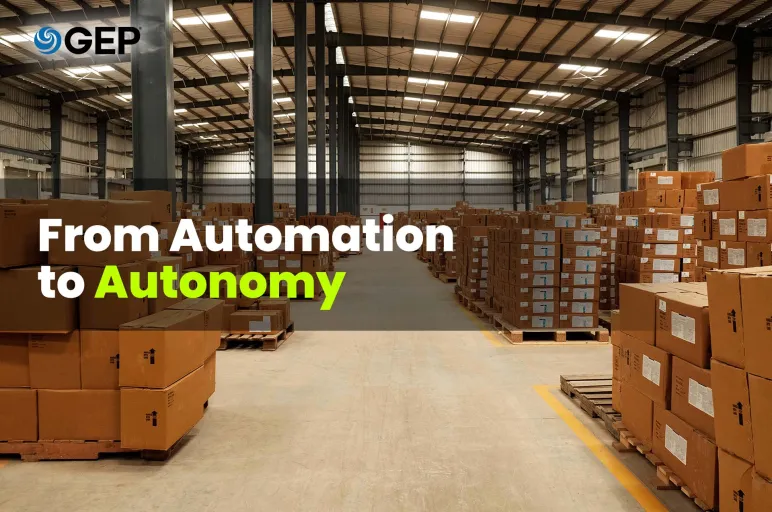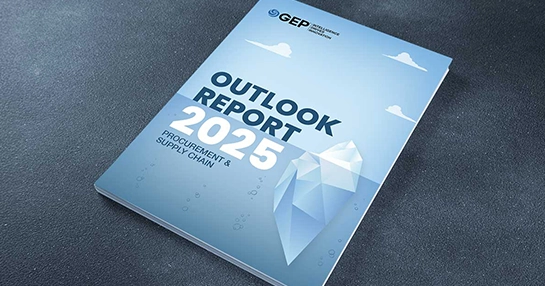
How AI Agents Are Expanding Procurement’s Capabilities Beyond Automation
- The rapid evolution of AI has made it possible to completely automate procurement.
- AI agents can understand data context, make recommendations, and even adapt and improve over time.
- Procurement teams need to move quickly to leverage technology and stay ahead of the curve.
October 27, 2025 | Procurement Software 4 minutes read
AI can automate routine tasks in procurement. Every procurement professional knows that already. It can automate vendor evaluation, selection and onboarding. It can negotiate and create contracts and then track performance against predefined metrics.
But that’s not all.
AI is capable of doing a lot more. It can think like a human, learn from outcomes and, when allowed, can also act on its own. And this is what separates it from traditional automation tools.
Not surprisingly, the potential use cases of AI in the world of procurement and supply chain are increasing with each day. These use cases span across the entire procurement lifecycle that starts with sourcing and supplier selection to contract management, performance tracking and payment processing.
“The difference between this wave of technology innovation and the others that have come before is profound. It is fundamentally different,” says Paul Blake, Senior Director at GEP in this webcast. The shift from automation to autonomy is huge and could have a big impact on how you operate, he adds.
Let’s find out the difference.
Analytics vs. Automation vs. Autonomy
Analytics uses technology to examine the data and information at hand and extract meaning from it. It uses traditional AI and machine learning algorithms to sort process and present data in such a way that its meaning becomes more transparent. Based on the analysis, people can make well-informed decisions.
Next to arrive on the scene was automation that worked on a set of defined rules. Technologies such as robotic process automation (RPA) carried out by programable bots can be used to quickly accelerate processes that were earlier carried out by people. Things such as data entry from inbound invoices or managing a large number of documents to a set of rules can now be handed over to the software, leaving exceptions and summaries for human review.
Over a period, the combination of analytics and automation became powerful. It gives the means today to look at spend history, identify savings opportunities and efficiencies and kick off a project automatically. Select an RFP or RFI template, assign roles to stakeholders and even pre-select the best-fit suppliers without human intervention.
The new wave of AI is autonomous. It can go beyond automation and assist in the execution of the project with tasks such as inviting suppliers and communicating with them. The confluence of analytics, automation and autonomy can bring about a new world of procurement where AI agents act on intelligence and work within the defined rules to make decisions.
Technology can collate all data and inputs and put it into context for users, says Andrew Bartolini of Ardent Partners in the same webcast. The progression of automation and analytics means that technology can now start to reason, offer insights and adapt based on changes in the marketplace, he says. It can not only recommend savings opportunities but also find that opportunity and then pursue it.
Discover More: AI-driven procurement platforms
What Makes AI Agents Different from Automation?
Automation works on a set of rules that tell it to act when something happens. For example, it automatically routes purchase requests above a threshold for approval. It can flag duplicate invoices based on exact matching rules. It can generate recurring purchase orders on a monthly schedule.
Although this ‘if and then’ model of automation is helpful, it cannot learn and adapt over time.
AI agents use machine learning, natural language processing and reasoning to understand the context of data. They learn from data to make recommendations and improve over time. They can identify intent, summarize meaning from large amounts of text, or make forecasts based on multiple inputs.
This adaptive nature combined with apparent context-awareness makes the agentic model of AI very compelling, says Blake.
For example, AI agents can recommend a sourcing strategy based on supplier performance, ESG data and market volatility. It can read supplier emails and identify their intent. It can summarize large RFP responses and flag compliance issues. It can constantly monitor macroeconomic signals, market conditions and consumer sentiment to accurately forecast supplier risks.
Why Procurement Teams Need to Move Fast
Given the pace at which technology is evolving, procurement teams need to act quickly. If they are not up to speed, they are at risk of getting left behind.
Blake explains: “Understanding the critical relationship between the relative strengths of humans and AI intelligence means that those limitations won’t become liabilities. Increasingly, the volatility and uncertainty in the world is going to require companies to be more adaptive and to comply with new regulations on a much more frequent basis.”
The rising pressure to adapt has made it vital for businesses to demonstrate that they are ahead of the curve. Early adoption of technology will help them succeed in this endeavor.
The Agentic AI Playbook for Procurement Pros
How to Move from Hype to Action and Results
Where to Begin
If you are starting your procurement transformation project and aren’t sure where to begin, consider this. Automate things or tasks where humans cannot do things differently than machines or add any value. These are routine, time-consuming tasks in procurement operations.
At the same time, it’s important to make humans a strategic part of the process. Leave them free to think strategically, handle exceptions, interact with suppliers and build strong relationships with them.
AI can assist and suggest, but humans must ultimately make the decisions and take accountability. Likewise, people should maintain ethical oversight and ensure that decisions align with business values and long-term objectives.



